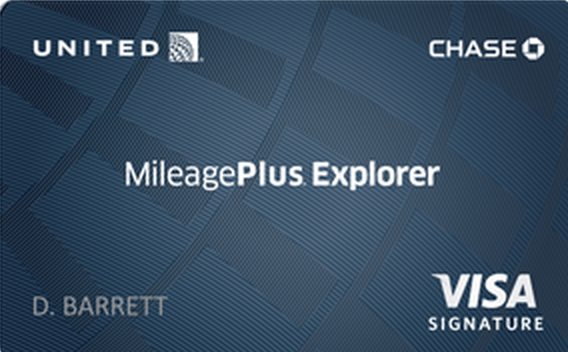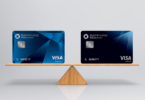Disclosure: I do not receive a commission from these cards.
The Chase United credit cards have seen some pretty good bonuses over the last couple of years. The standard offer is 30,000 miles but there have been targeted offers that have been at the 50,000 mile level. As a result, many people have these cards.
The cards themselves have some value for the traveler who only flies on United a few times a year. Cardholders receive a waiver on the fee for their first checked bag which can save $50 on each round-trip, if the trip is paid for with that card. It also gives two free United Club passes annually.
Maximizing Your United Credit Card
However, as a daily use card, it really does not get a lot of use. Most people probably use it to meet the minimum spending for the bonus and then stick it in a drawer until a trip comes up. That is because airline co-branded credit cards rarely offer any great incentive to make it a go-to card, especially an airline card like United that has the Ultimate Rewards as a transfer partner. With cards like the Chase Freedom, Chase Sapphire Preferred and the Chase Ink Bold/Plus, it is possible to rack up a lot more miles with them to transfer to United than it is to use the United card.
Big Spending Bonus
The Chase United cards do have one thing going for them in the spend column, though. That is that they do give a bonus on the first $25,000 in spending in a year. That bonus is for 10,000 additional United MileagePlus miles. While that is a lot of spending, it can definitely make sense to use your United miles in non-bonus categories (for other cards) to work towards that $25,000 goal. If you reach it, that basically means that all the miles earned up to that point were actually at a rate of 1.4 miles per dollar spent. That is better than the non-bonus categories of every other card that offers the ability to be United miles (Chase cards in the Ultimate Rewards program) and is second only to the United Club card which gives 1.5 miles for every dollar spent.
The good thing about this type of bonus is that it is great to use your United card for things like purchasing gift cards at places that you would not receive bonuses. It can also be useful if you do not have a Chase Ink card (which you earn 5x points with at office supply stores and gift cards can be purchased there). It also makes a good card to use for Amazon Payments. At $1,000 in Amazon Payments per month (fee-free), that puts you right about the half-way point for the required spending in the calendar year.
When it comes to foreign spending, it can be a good card for that also since it does not carry any foreign transaction fees. So, in my situation, much of my spending on credit cards in Europe does not earn me bonus points (I know, it stinks!). This is why I am using my Chase United business card more and more to get to that $25,000 mark.
After $25,000
Ok, so what happens after you reach the $25,000 mark? Unfortunately, the bonus is only given once so spending $50,000 in one year on the card will not earn you another bonus (If you are wanting to put that type of spending on a card, I would recommend you do that on the United Club card which will give you the flat 1.5 miles on every dollar). But, once you reach the $25,000 mark, I would stop using it as you can switch back to other cards to work on other currencies (like an American Express SPG card).
Annual Fee
The annual fee on these cards sit at $95. If you are not getting a lot of use out of the card, then you may find that annual fee to be somewhat unacceptable. The good news is that you do receive two United Club passes each year so that can help to offset it a little bit. The other good news is that Chase is normally pretty good about giving retention bonuses with these cards. The offer does not seem to be extra miles but is more often given as a statement credit – such as giving a $100 statement credit to offset the annual fee. If you are putting quite a bit of spending on the card, they may be even more accommodating to you in the retention offer since they do not want to lose you as a customer.
What if you already had the card before?
Chase (typically) gives a bonus on a card once in a lifetime, unless the product changes. So, what if this type of spending and bonus sounds good to you but you have already had and cancelled a United credit card? Does it make sense to take a hard credit inquiry to get the card again, especially when you will not get a sign-up bonus? For almost any situation, that does not make sense.
What you can do is to convert an existing Chase card to a Chase United card. This works very well as it allows you to keep an existing credit line with Chase and not have to open a new account. It also allows you to switch from a card that may no longer have given you value.
Another option is to check out the other United credit card offerings. If you have had the personal, the business card is an option and vice versa. You may also consider getting the Chase United Club card (which carries a very annual fee of $395) even though it too offers no sign-up bonus. The reason you may want to consider it, however, is that you can often get the first year’s annual fee waived. If that is the case, you have one year of receive United Club access, Premier Access for faster check-in and boarding, close-in booking fee waivers, two free bags, and 1.5 miles per dollar on all spending. When that annual fee comes up, you can downgrade it to the Chase United MileagePlus Explorer card and then just pay that $95 annual fee going forward.
Summary
It sometimes pays to familiarize yourself with some of the lesser known, or not often looked-at, features of your credit cards. In this case, if you can direct some spending to a Chase United card that you would otherwise only be earning 1 point/mile per dollar on, you could end up with earning an extra 10,000 miles.
However, also keep in mind that Chase does tend to offer a 10,000 point retention offer on the Chase Ink cards if you meet another spending threshold (typically $5,000 in 90 days). If you find yourself with that card and the annual fee coming up, you may want to focus on that as it gives you the same amount of miles for a lot less spending. If you are able to handle the spending, though, why not go for both options? 🙂








I keep this card for the primary insurance on rental cars.
Absolutely, that is a great reason to keep it. Because Chase cards do not cover rentals over 15 days, I have had to the last couple on the Amex with the primary extended coverage, but the Chase United cards are excellent for shorter rentals.
I have this card, and spent $43k on it last year. I have since gotten the CSP. I have never done a retention offer, and have seen the FT thread on it, but how exactly do I do one? Do I come on really strong and just say I want to cancel?
You should be in a good position to request one with your spend! With Chase, I typically just tell them that I would like to keep the card but the annual fee is a bit prohibitive (especially since you are moving a lot of spend to the CSP). Ask them if there is anything they can do to help make it easier to take – maybe some miles or statement credit. The usual offer is the $100 statement credit, so that is what they should offer you. You have certainly brought them enough money from your use!
Any thoughts on the old Chase MileagePlus Card?
I had actually cancelled mine (by a mistake, thought it was the other one!). I like it – the primary rental insurance is nice and because I had downgraded it from the old Presidential Plus, I was still getting elite status with Hyatt and Avis. You should still be able to get a retention bonus on it to make it worthwhile.
I made reservations for roundtrip to Asia with explorer card and used miles. I noticed that the 2nd checked bag is $100 per person one-way. So for 2 adults, it is $400! Is this typical? I paid using United explorer card, not the club card. Does it help? Is there anything else I can do to avoid it?
Thanks,
It is unfortunate, but the United Explorer card just gives the FIRST bag free. If you already get the first bag free by virtue of the destination (most international destinations), you do not get to carry that free bag over onto the second bag.
That kind of pricing is typical. What you could do is call United and ask them if the second bag would be free if you had the United Club card. If they say yes, and you need the two bags, go ahead and message Chase to ask them if they can offer you the Club card free for the first year. Even if they do not, the standard offer is $95 off (so $300 for the first year). That means you are saving $100 (on the bags)AND getting Club access and the 1.5 miles per dollar and waiving of close-in booking fees.
The only other way would be to try to match another airline status to United (for Gold or above). Or, do you have Aegean status? Aegean Gold will get you the two bags for free. So sorry you have to deal with that!